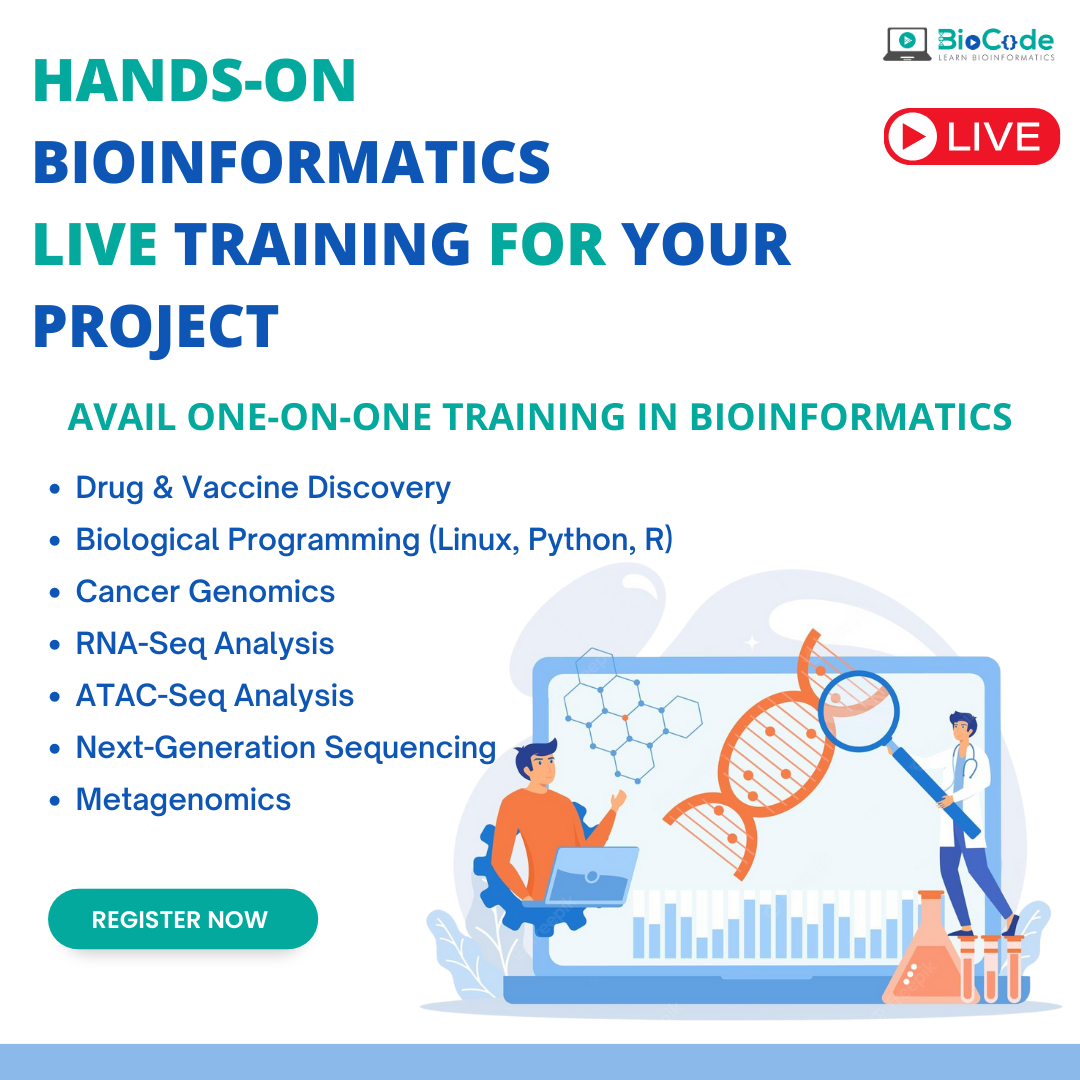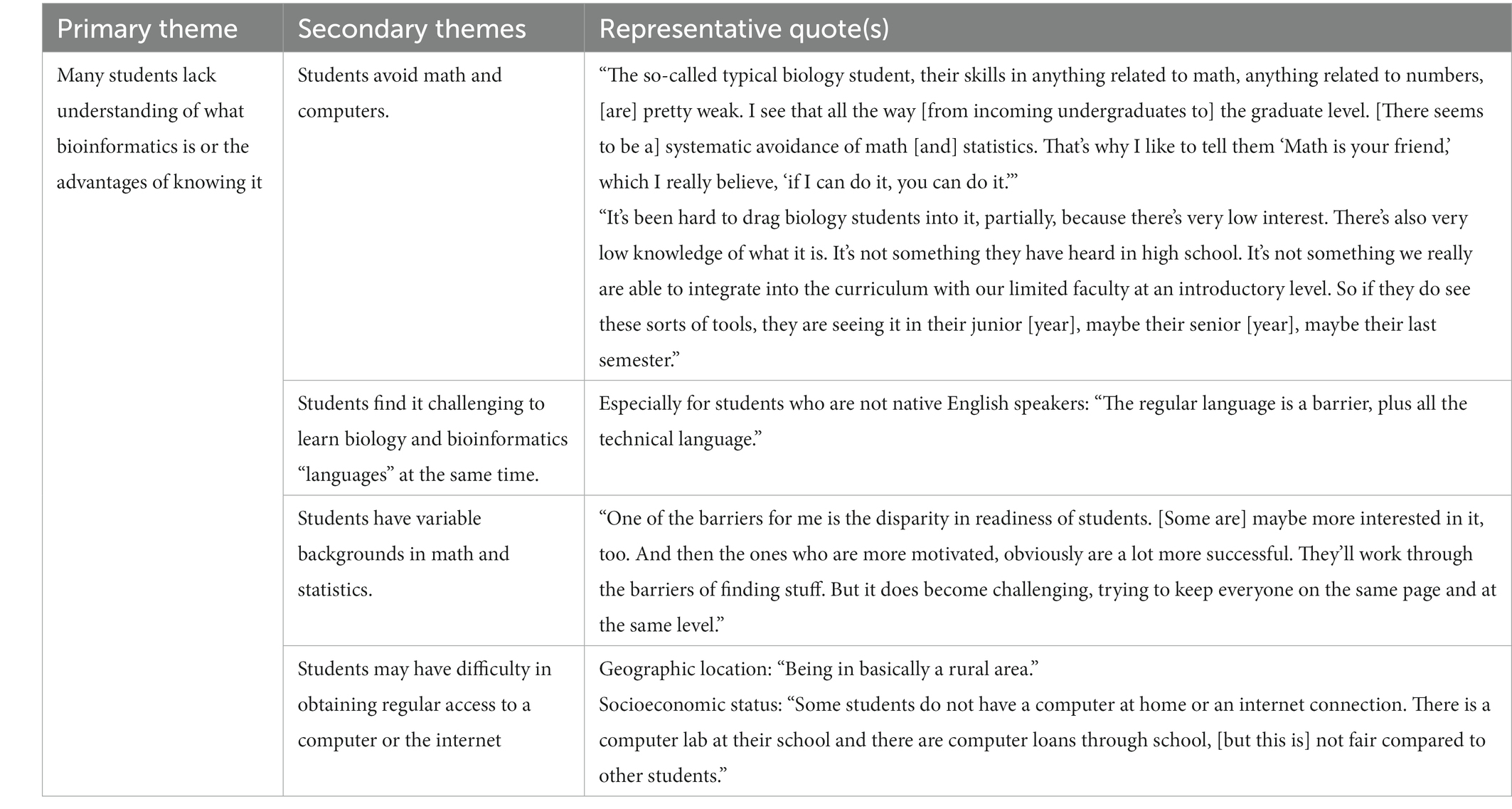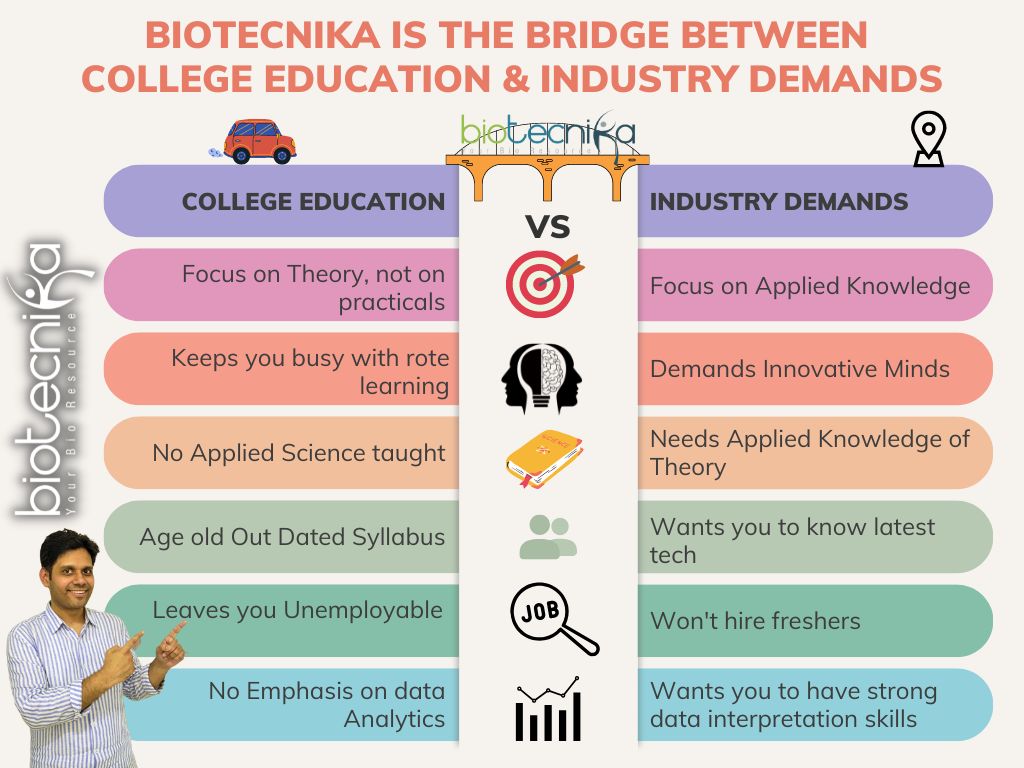Bioinformatics Tutor Things To Know Before You Get This
Table of ContentsThe 15-Second Trick For Bioinformatics TutorAn Unbiased View of Bioinformatics TutorSome Of Bioinformatics TutorFascination About Bioinformatics TutorA Biased View of Bioinformatics Tutor
Of the total amount participants associated with the training, 80% were students from public greater education and learning establishments, while the remaining 20% came from exclusive organizations. To certify for a certification of involvement, trainees were called for to participate in at the very least 90% of the overall training hours. As an outcome of this requirement, an impressive 95% of the participants efficiently obtained their certificates, having not just fulfilled the minimum participation standards but also completed all assigned tasks throughout the training.
Throughout the height of the COVID-19 pandemic, particularly between June and August 2020, the job group was entrusted with arranging specialized training in bioinformatics. This training was particularly aimed at students from the research study group Nucleus for Study in Applied Computer at the Federal College of Pará (UFRA) The adjustment to remote understanding platforms as a result of the pandemic produced a possibility to check out new teaching methodologies and electronic devices that enhanced both reach and effectiveness.
This training course was created to offer an available yet detailed review of Artificial Intelligence strategies, particularly as applied in bioinformatics (Bioinformatics Tutor). This virtual format enabled involvement from students across Brazil, many of whom may not have had the chance to participate in in-person sessions.
The 9-Minute Rule for Bioinformatics Tutor
A noteworthy function of this course was its focus on hands-on understanding. Roughly 50% of the total training hours were committed to functional tasks where trainees developed intelligent designs and applications in a range of scientific domains, including genetics, molecular biology, and environmental data evaluation. Extensively made use of tools and frameworks such as Spyder, Google Colab, Jupyter Notebooks, and Orange were integrated into the coursework. These platforms made it possible for trainees to participate in real-time information adjustment, design training, and algorithm testing.
Sixty of them were associated with various higher education and learning establishments in the state of Pará, while the remaining twenty came from establishments found in five various other Brazilian states. By presenting Artificial Knowledge in a relevant and functional context, the effort served to link the gap between theory and real-world application, offering trainees with a strong structure for future study or employment in the area.
The training campaign created component of a broader scholastic outreach initiative referred to as the Bioinformatics when driving task. This job has, throughout the years, presented lots of trainees to the world of bioinformatics and computational biology. The occasions held under this umbrella initiative have taken location across multiple areas and years, as summarized in Table 1 (List of occasions, places, years, and complete numbers of trainees and teachers)
One of one of the most exceptional results of the Bioinformatics when traveling initiative has been its contribution to the growth of decentralized study teams. Several of these teams, initially brought with each other by their participation in training events, have actually since taken place to produce independent clinical study in partnership with neighborhood academic establishments. The training not just cultivated scientific thinking within the context of bioinformatics however additionally stimulated joint connections that expanded past the training environment. These partnerships have actually led to raised regional clinical performance and contributed meaningfully to the advancement of the wider bioinformatics community in Brazil.
10 Simple Techniques For Bioinformatics Tutor
The project itself was conceived and organized by megabytes and RR, that oversaw the planning and implementation of each action. Lectures were provided by a multidisciplinary group including MB, FA, EF, KP, find here JS, DM, SN, LP, LG, RR, ih, and a/c. The same team, leaving out IH and RR, likewise served as tutors for the sensible training modules. Funding for the job was given with the give 88887.200562/ 2018-00 from CAPES. The authors expand their thankfulness to every person who added to the understanding of this task, whether straight or indirectly, because its beginning.
The Federal College of Pará's Office of Research study (PROPESP/UFPA) additionally gave monetary support, particularly for the manufacturing of the final manuscript. The writers proclaim no commercial or financial disputes of rate of interest that can have affected the research study. All analyses and opinions shared in this short article are exclusively those of the authors and do not necessarily reflect those of their respective establishments, the author, editors, or customers involved in the publication process.

The smart Trick of Bioinformatics Tutor That Nobody is Talking About
From an instructional perspective, the mentor technique utilized in the training was purposefully interactive. Courses were carried out in a way that urged pupil involvement and discussion, surpassing memorizing memorization to check out how ideas are developed, applied in day-to-day live, and checked in scholastic setups. The instructional approach concentrated on nurturing both strong view it now and battling students, supplying customized assistance, and building confidence through sustained mentorship and perseverance.

Each team, containing about 36 participants, was sustained by 3 advisors-- a lot of whom were postdoctoral scientists with specialized knowledge. These coaches not just aided design the team tasks but likewise promoted their execution, making certain that each research study concern was both suitably challenging and pertinent. The goal was to offer a naturally practical context that participants might check out with flexible objectives and accessibility to curated datasets.
For additional understandings right into the methodology and outcomes of this project-based knowing approach, viewers are guided to S1 Text, which consists of in-depth summaries of the instructional framework, analysis techniques, and job styles utilized in the training sessions.
Little Known Facts About Bioinformatics Tutor.
Of the total amount individuals included in the training, 80% were pupils from public greater education and learning institutions, while the continuing to be 20% came from private organizations. To certify for a certification of engagement, trainees were needed to participate in at least 90% of the total training hours. Notably, past the trainees that enrolled in the training sessions, seven skilled teachers participated in providing the courses, while 3 devoted research teachers worked with the total training process. About 50% of the complete training hours were committed to functional activities where trainees built intelligent models and applications in a range of clinical domain names, including genes, molecular biology, and ecological information analysis. The training not just fostered clinical thinking within the context of bioinformatics yet also sparked joint partnerships that expanded past the training atmosphere.